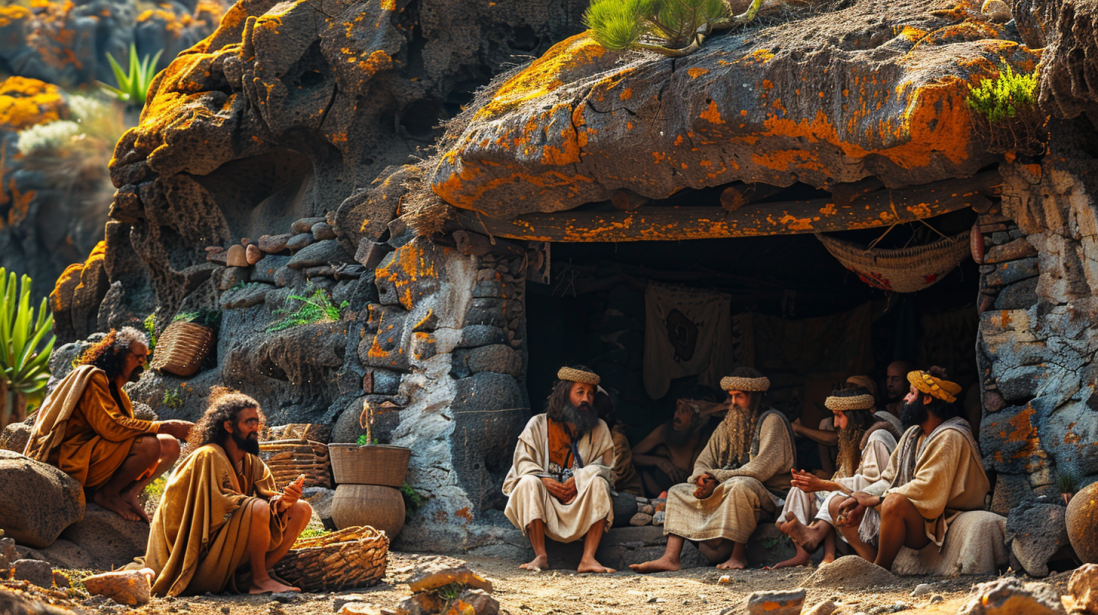Introduction
The Guanches, the indigenous inhabitants of the Canary Islands, have long fascinated historians and archaeologists. Known for their unique culture and mysterious origins, the Guanches were first encountered by the Spanish during their conquest of the islands in the 15th century. These tall, fair-skinned people lived in caves and practiced a Neolithic lifestyle, raising questions about their ancestry and how they came to inhabit the remote Canary Islands. Despite the decline of their culture following the Spanish conquest, remnants of Guanche heritage endure in the Canary Islands today.
The Enigmatic Guanches
The Guanches are often described as a mysterious people due to the limited historical records and the unique aspects of their culture. When the Spanish began to conquer the Canary Islands, they found a society that seemed isolated from the rest of the known world, yet exhibited intriguing traits that sparked curiosity and speculation.
Physical Appearance and Lifestyle
The Guanches were noted for their tall stature and fair complexion, traits that set them apart from other indigenous populations in nearby regions. They lived a Neolithic lifestyle, relying on agriculture, herding, and fishing. Their dwellings were often caves or simple stone structures, and they crafted tools and pottery that reflected their resourcefulness and adaptation to island life.
Theories About Their Origins
The origins of the Guanches have been the subject of much debate and research. Several theories have been proposed to explain their ancestry:
Berber Descent
One prevalent theory suggests that the Guanches were descendants of the Berbers from North Africa. Linguistic studies and genetic research have shown similarities between the Guanches and Berber populations, supporting the idea of a migration from the African mainland to the Canary Islands.
Mediterranean Connections
Another theory posits that the Guanches might have connections to ancient Mediterranean civilizations. This hypothesis is based on similarities in certain cultural practices and artifacts found in the Canary Islands and those of early Mediterranean societies. However, direct evidence linking the Guanches to Mediterranean origins remains elusive.
Isolation and Adaptation
Some scholars argue that the unique characteristics of the Guanches resulted from prolonged isolation and adaptation to the island environment. Over centuries, the Guanches developed distinct physical and cultural traits that differentiated them from other populations.
Archaeological Evidence
Archaeological excavations in the Canary Islands have provided valuable insights into the Guanche culture. Discoveries of mummified remains, tools, pottery, and cave paintings have helped reconstruct aspects of their daily life, social organization, and religious practices.
Genetic Studies
Recent advances in genetic research have shed light on the Guanches’ ancestry. DNA analysis of Guanche remains indicates a strong genetic link to North African populations, particularly the Berbers. This genetic evidence supports the theory of migration from North Africa to the Canary Islands, likely occurring in prehistoric times.
Cultural Practices and Beliefs
The Guanches had a rich cultural heritage, with unique practices and beliefs that distinguished them from other contemporary societies. They practiced mummification, a technique that preserved their dead in remarkable detail. Religious rituals often involved worship of natural elements, such as mountains and the sun, reflecting their deep connection to the environment.
The Spanish Conquest and Its Impact
The Spanish conquest of the Canary Islands in the 15th century led to significant changes in Guanche society. Many Guanches were assimilated into the new colonial system, while others perished due to conflict, disease, and enslavement. Despite this, aspects of Guanche culture survived and influenced the evolving cultural landscape of the Canary Islands.
Legacy of the Guanches
Today, the legacy of the Guanches can still be seen in the Canary Islands. Place names, traditional practices, and genetic traces in the modern population reflect the enduring influence of the Guanches. Cultural festivals and historical commemorations also honor their heritage, keeping the memory of the Guanches alive.
Conclusion
The Guanches, with their mysterious origins and unique culture, continue to captivate the imagination. While genetic and archaeological evidence points to a connection with the Berbers of North Africa, the full story of their ancestry and migration remains a fascinating puzzle. The legacy of the Guanches lives on in the Canary Islands, a testament to their resilience and the enduring impact of their culture.
FAQs
Who were the Guanches?
The Guanches were the indigenous people of the Canary Islands, known for their unique culture, fair complexion, and tall stature.
What lifestyle did the Guanches lead?
The Guanches lived a Neolithic lifestyle, engaging in agriculture, herding, fishing, and crafting tools and pottery. They often lived in caves or simple stone structures.
What theories exist about the origins of the Guanches?
The main theories about their origins include descent from the Berbers of North Africa and possible connections to ancient Mediterranean civilizations.
What evidence supports the Berber descent theory?
Linguistic studies, genetic research, and archaeological findings suggest similarities between the Guanches and Berber populations, supporting the theory of migration from North Africa.
How did the Spanish conquest affect the Guanches?
The Spanish conquest led to the assimilation, decline, and displacement of the Guanche population. Many Guanches perished due to conflict, disease, and enslavement.
What is the legacy of the Guanches today?
The legacy of the Guanches is evident in place names, traditional practices, genetic traces in the modern population, and cultural festivals in the Canary Islands.

